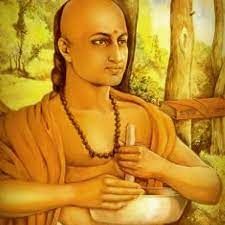What Books and Burials Tell us Class 6 Worksheet History Chapter 4
Fill in the blanks:
(i) The Rigveda has been written in Sanskrit.
(ii) Inamgaon is situated on the river Ghod.
(iii) The Rigveda was composed about 3500 years ago.
(iv) Sanskrit is part of a family of languages known as Indo-European.
(v) The major gods praised in the hymns of the Rigveda were Agni, Indra, and Soma.
(vi) The dead were buried with distinctive pots, which are called Black and Red Ware.
 Rigved
Rigved
State True (T) or false (F):
(i) The river Ghod is a tributary of the Bhima. True
(ii) The oldest Veda is the Samaveda. False
(iii) Slaves were women and men who were often captured in war. True
(iv) Hymns were composed of sages (rishis). True
(v) In a hymn in the Rigveda, Vishvamitra used the word 'sisters' for the two rivers Beas and Sutlej. True
(vi) Roma, a plant from which a special drink was prepared. False
4 Vedas
Very Short answer type questions:
Q1: Name 4 Vedas.
Ans: The four Vedas are the Rigveda, Samaveda, Yajurveda, and Atharvaveda.
Q2: Where was the page from a manuscript of the Rigveda found?
Ans: This manuscript of the Rigveda, on birch bark, was found in Kashmir.
Q3: How were slaves treated?
Ans: Slaves were treated as the property of their owners, who could make them do whatever work they wanted.
Q4: In which language was the Rigveda written?
Ans: The Rigveda is in old or Vedic Sanskrit.
Q5: Which language belongs to the Tibeto-Burman family?
Ans: The language used in the north-east belongs to the Tibeto-Burman family.
Q6: Who was Charaka?
Ans: About 2000 years ago, there was a famous physician named Charaka who wrote a book on medicine known as the Charaka Samhita.
 Maharishi Charaka
Maharishi Charaka
Q7: As per Rigveda, why were battles fought?
Ans: Battles were fought for cattle, land, water, and for capturing people.
Q8: Name the site where the skeleton was found with 33 gold beads, 2 stone beads, 4 copper bangles, and one conch shell.
Ans: Brahmagiri.
Q9: What did people at Inamgaon eat?
Ans: People at Inamgaon ate wheat, barley, rice, pulses, millets, peas, and sesame.
Q10: What are Megaliths?
Ans: Stone boulders used to mark burial sites are known as megaliths.
Q11: How were yajnas performed?
Ans: Yajnas were performed by offering ghee and grains into the fire in order to please gods and goddesses.
Q12: Why were yajnas or sacrifices performed?
Ans: Yajnas or sacrifices were performed to please gods and goddesses.
Q13: Which language belongs to the Austro-Asiatic family?
Ans: The languages spoken in Jharkhand and parts of central India belong to the Austro-Asiatic family.
Q14: Which language belongs to the Dravidian family?
Ans: Tamil, Telugu, Kannada, and Malayalam belong to the Dravidian family.
Q15: Where was the practice of erecting megaliths prevalent?
Ans: The practice of erecting megaliths was prevalent throughout the Deccan, south India, in the north-east, and Kashmir.
Q16: What is Sukta?
Ans: The Rigveda includes more than a thousand hymns, called sukta or “wellsaid.”
Q17: Which is the oldest Veda among the four Vedas?
Ans: The oldest Veda is the Rigveda.
FAQs on What Books and Burials Tell us Class 6 Worksheet History Chapter 4
| 1. What do books and burials tell us about ancient civilizations? |  |
| 2. How do archaeologists use books and burials to understand ancient societies? |  |
| 3. What can we learn from the artifacts found in ancient burials? |  |
| 4. How are books and manuscripts preserved for study by archaeologists? |  |
| 5. Why are books and burials important sources of information for studying ancient civilizations? |  |

















